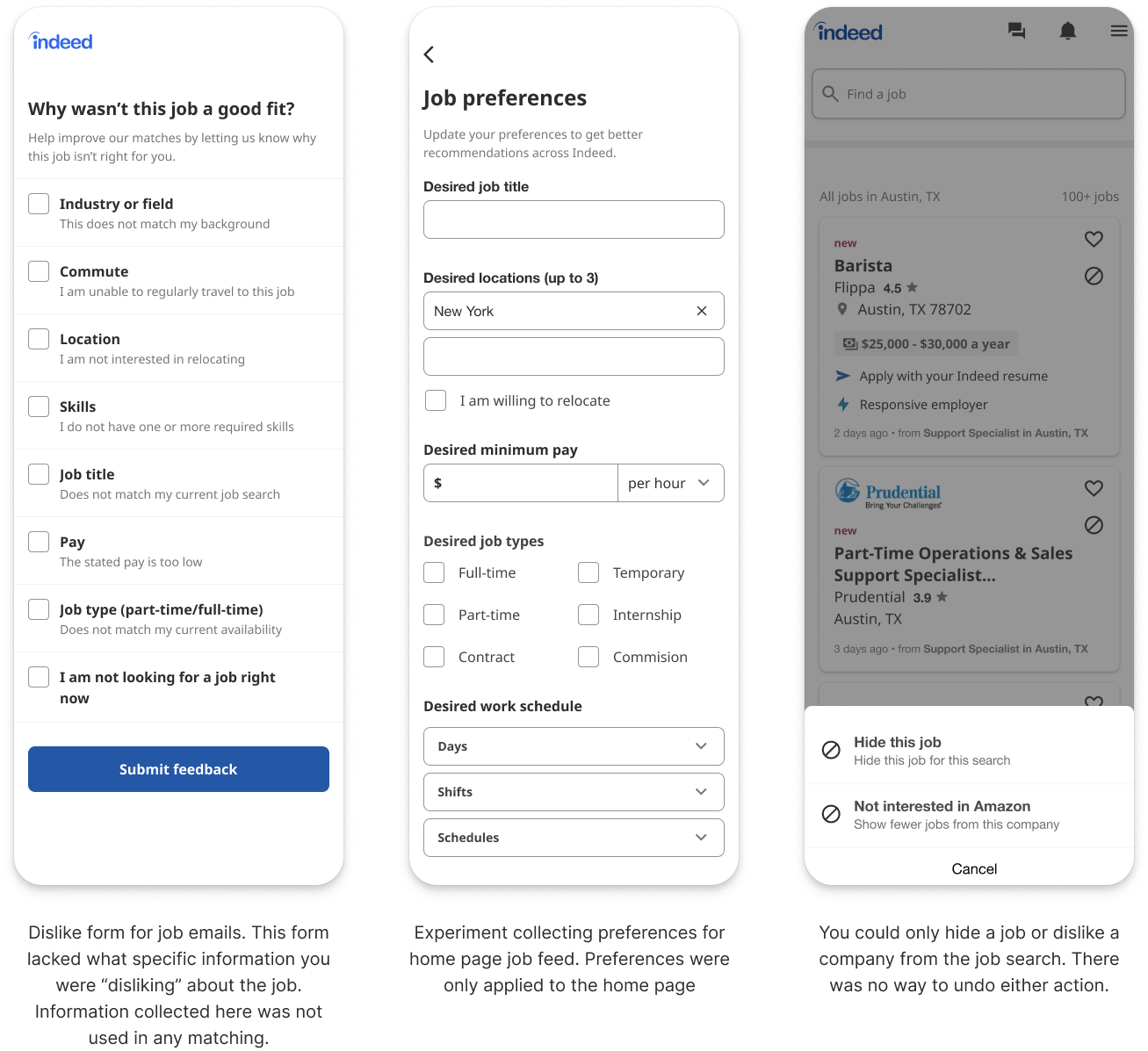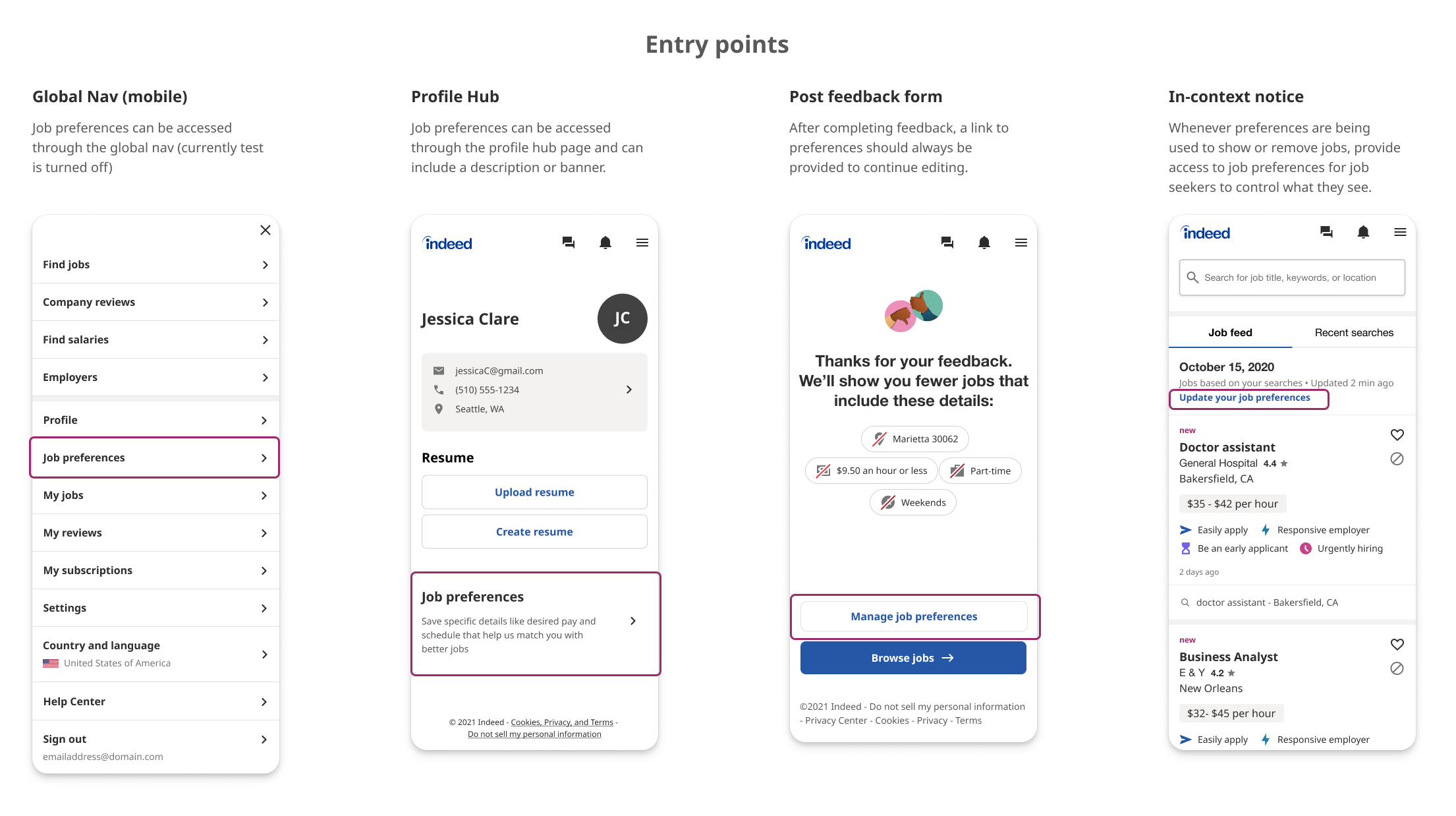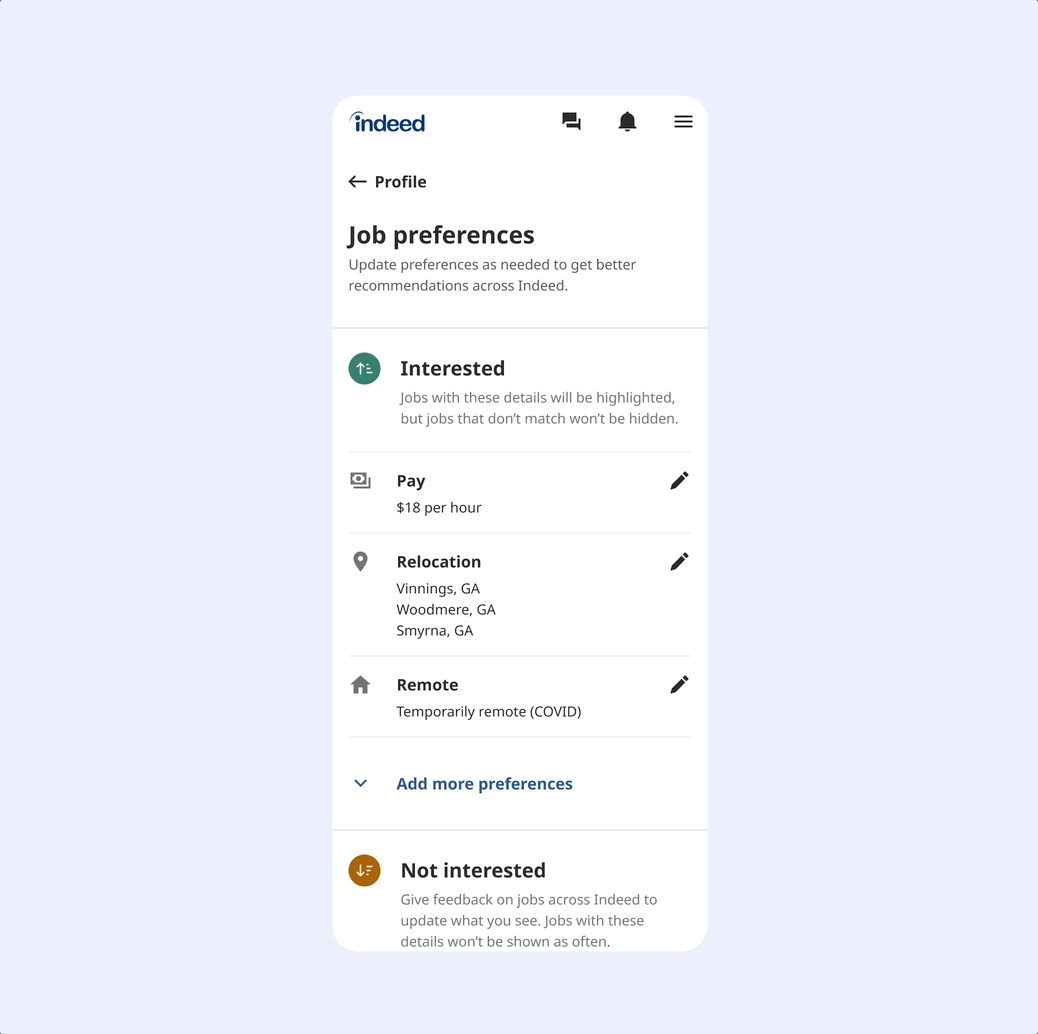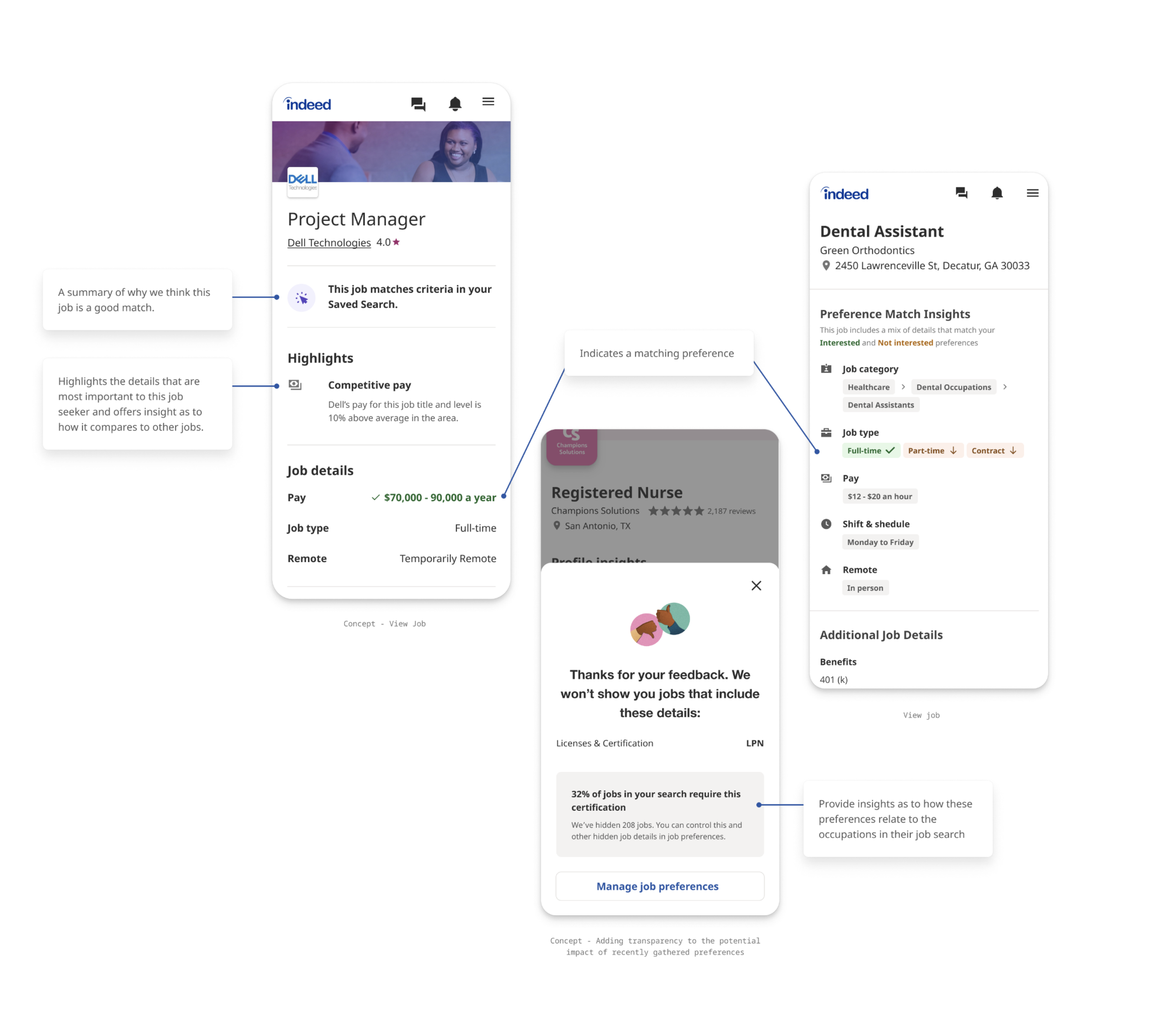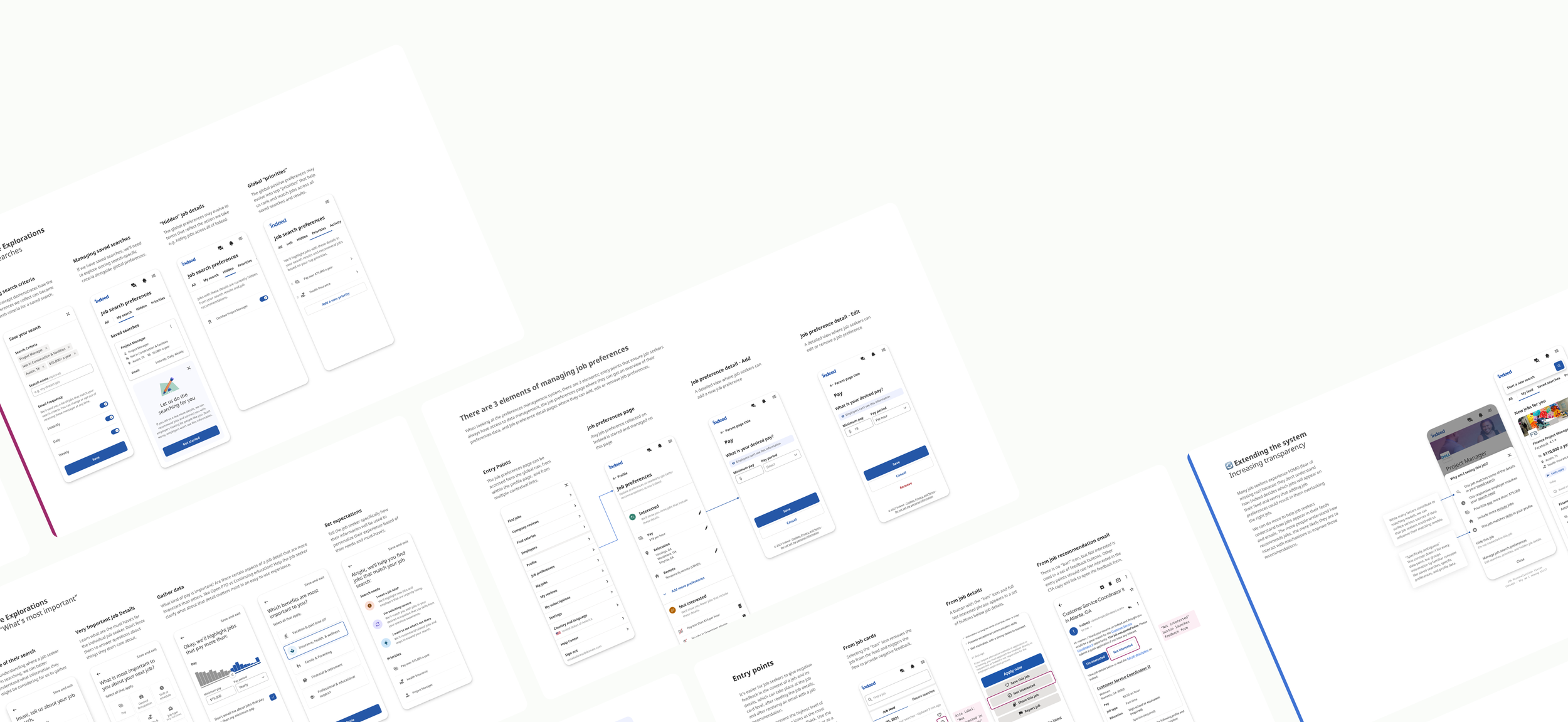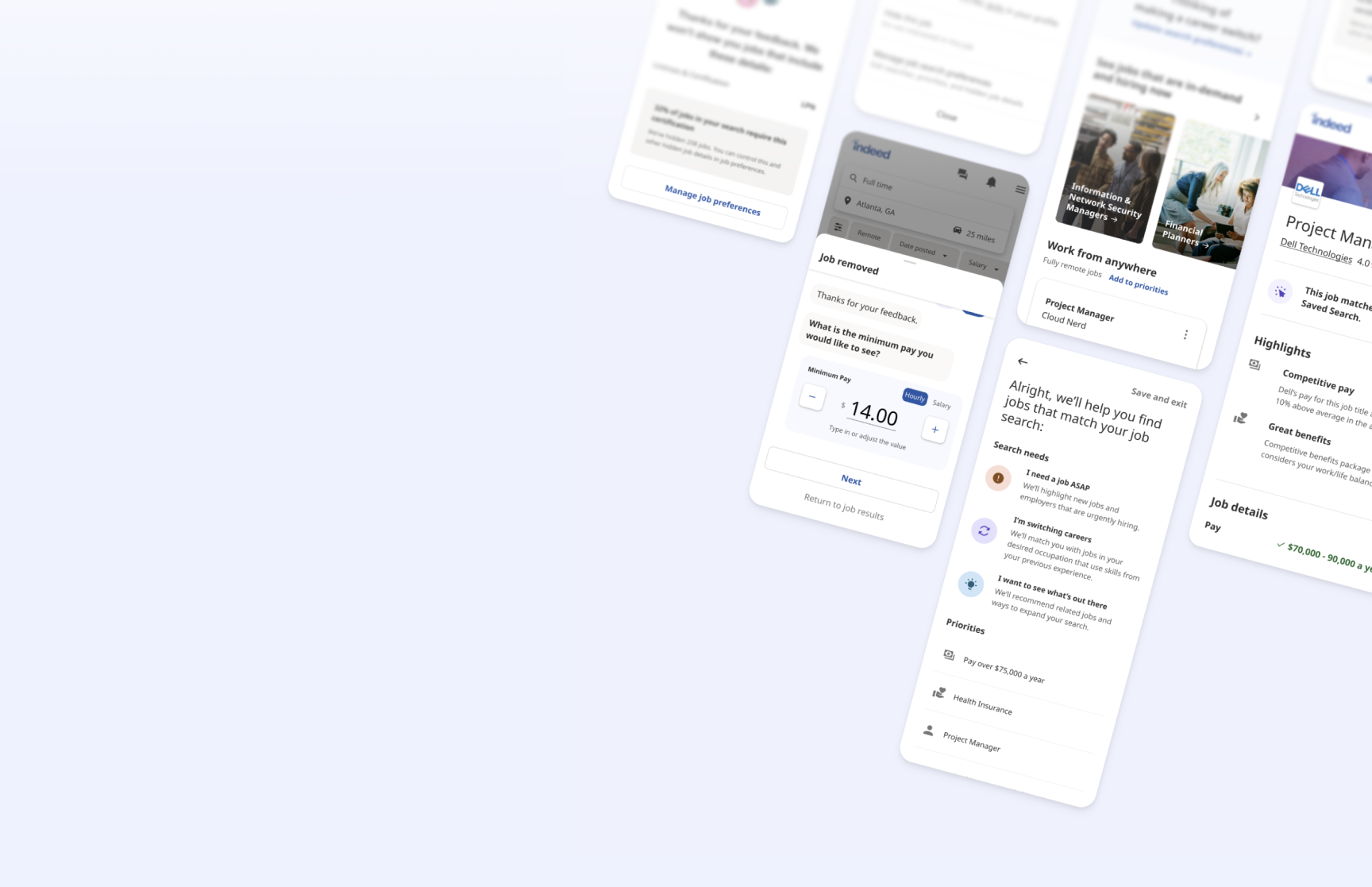
A unified framework for job preferences

Time and time again, Job seekers told us they constantly see irrelevant jobs on Indeed. Indeed had tried to address this issue by capturing job seeker preferences, but each team approached the problem in a different way, causing mismatched terminology and fragmented application. The result? A frustrating experience that didn’t reflect how people actually search for work.
In 2022, I led design on the Job Seeker Accelerator team, partnering closely with content and research counterparts. Together, we worked across the Indeed ecosystem to understand how preferences actually function in the wild, align product teams around a shared strategy, and lay the foundation for a cohesive, scalable preferences experience across Indeed.
Our approach
Our research revealed a messy truth: job seekers’ preferences are constantly in flux. They change based on urgency, new information, and competing priorities. Most people couldn’t tell us exactly what they wanted in a job—but when they saw a bad fit, they knew it immediately.
That became our starting point.
We focused on collecting dislikes, clear, in-the-moment signals about what didn’t work. To make that feedback easy and trustworthy, we ran rapid iterations to test different interaction patterns, language, and placements.
Once we landed on a simple, scalable pattern, we worked to bring consistency across search, job cards, and emails, making it easy for job seekers to say “no” and know that Indeed would listen.
Expanding the system
After validating the power of dislikes, we applied the same approach to positive preferences. We made it easier for job seekers to share what mattered, by asking in the right context, at the right time.
We also created a single, centralized page where job seekers could manage their preferences—adding, editing, or removing them anytime. It gave people more control and helped tie the experience together.
To build trust, we focused on signaling, showing job seekers how their preferences were being used. That meant calling out when jobs were removed based on their dislikes, highlighting matched preferences on job pages, and providing in-context options to adjust or undo settings. Preferences weren’t just collected—they were reflected, acted on, and easy to change.
Final deliverables
We brought everything together into a shared foundation teams could build on.
This included:
A unified set of preference principles to guide product decisions
A tested, scalable pattern for collecting dislikes and positive preferences
A centralized management experience for job seekers to review and edit their preferences
Clear signaling patterns to show how preferences impact the experience
Together, these assets gave teams across Indeed the tools to deliver a more consistent, flexible, and trustworthy preferences experience.

